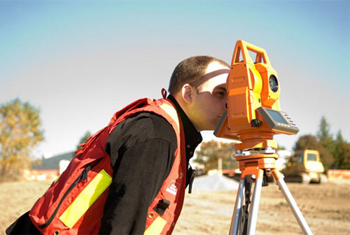 How is the sine law used in land surveying ?
Land surveying makes an extensive use of the sine law. The idea is to subdivide the land into
many triangles and to measure one side and two angles of each triangle. With the sine law the
other two sides can be computed. Mount Everest was found by this method to be the highest mountain on planet earth.
How is the sine law used in land surveying ?
Land surveying makes an extensive use of the sine law. The idea is to subdivide the land into
many triangles and to measure one side and two angles of each triangle. With the sine law the
other two sides can be computed. Mount Everest was found by this method to be the highest mountain on planet earth.
The Law of Sines
The law of sines (also known as: sine rule, sine law, or sine formula) is an equation relating the lengths of the sides
of any triangle to the ‘sines’ of its angles. Let Δ ABC be any triangle. If A, B, and C are the measures
of the angles of Δ ABC and if 'a', 'b', and 'c' are the lengths of the sides opposite the corresponding angles,
then
The law of sines can be used to find the remaining sides of a triangle when the measures of two angles and any side
are known (AAS or ASA). It can also be used to find the remaining angles of a triangle when the measures of two
sides and an angle opposite one of these sides are known (SSA). In some such cases, the formula gives two possible
values for the enclosed angle, leading to an ambiguous case. The law of sines is very useful in solving direct and
indirect measurement applications.